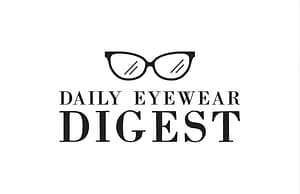Good vision is essential for a child’s development and learning. Early detection of vision problems can significantly impact a child’s success and well-being. This guide helps parents recognize key signs indicating their child might need glasses and provides actionable steps to ensure proper eye care.
Understanding Vision Problems in Children
Children can experience various vision problems, including nearsightedness (myopia), farsightedness (hyperopia), and astigmatism. These issues can affect their ability to see clearly at different distances, leading to difficulties in learning, playing, and everyday activities.
Common Vision Issues
- Myopia (Nearsightedness): Difficulty seeing distant objects clearly.
- Hyperopia (Farsightedness): Difficulty seeing close objects clearly.
- Astigmatism: Blurred vision due to an irregularly shaped cornea or lens.
Impact on Daily Life
Untreated vision problems can result in poor academic performance, difficulty in sports and activities, and social challenges. Early detection and correction are crucial for a child’s overall development.
Why Early Detection Matters
Identifying vision problems early can prevent long-term issues. Children are often unaware of their vision problems, as they assume everyone sees the same way they do. Regular eye exams and vigilance can ensure any issues are addressed promptly.
Long-term Benefits
- Academic Success: Clear vision is vital for reading, writing, and other learning activities.
- Confidence: Corrected vision can boost a child’s confidence in social interactions and sports.
- Overall Health: Early detection of eye problems can also indicate other health issues that might need attention.
Common Signs Your Child Might Need Glasses
Parents should watch for specific signs and symptoms that might indicate vision problems. Recognizing these early can help in seeking timely professional help.
Behavioral Signs
- Squinting or closing one eye
- Tilting the head to see better
- Frequent eye rubbing
Physical Symptoms
- Red, watery eyes
- Complaints of headaches or eye pain
- Holding objects very close to the face
Signs in Infants and Toddlers
Infants and toddlers might not be able to express their vision problems, so parents need to observe their behavior closely.
Developmental Delays
Vision problems can sometimes cause delays in crawling, walking, or grasping objects. If a child struggles with these activities, it might be due to poor vision.
Squinting
If an infant or toddler frequently squints or closes one eye, it might indicate a vision problem. Persistent squinting should be evaluated by an eye care professional.
Signs in Preschool-Aged Children
Preschool-aged children are more active and engage in activities that require good vision. Observing their behavior during these activities can provide clues about their vision.
Learning Difficulties
Children who have trouble recognizing letters, shapes, or colors might be experiencing vision problems. Difficulty following along in picture books or avoiding reading activities can also be signs.
Poor Hand-Eye Coordination
Difficulty with puzzles, coloring within lines, or playing catch can indicate vision problems. These activities require clear vision and proper hand-eye coordination.
Signs in School-Aged Children
School-aged children rely heavily on their vision for reading, writing, and other classroom activities. Changes in their academic performance or complaints about vision should be taken seriously.
Struggling with Reading
Children who need to hold books very close to their face, lose their place frequently while reading, or avoid reading altogether might have vision problems.
Frequent Headaches
Complaints of headaches, especially after school or reading, can be a sign of eye strain caused by uncorrected vision problems.
Frequent Eye Rubbing or Blinking
Excessive eye rubbing or blinking can be a sign of eye strain or discomfort. While occasional rubbing is normal, persistent behavior should be evaluated.
Causes
Eye strain, allergies, or vision problems can cause frequent eye rubbing or blinking. An eye exam can help determine the underlying cause.
When to Be Concerned
If eye rubbing or blinking is accompanied by other symptoms like redness, watering, or complaints of blurred vision, it’s essential to consult an eye care professional.
Squinting or Tilting the Head
Squinting or tilting the head to see better can indicate a vision problem. These actions are often unconscious attempts to improve clarity.
Reasons
Children might squint or tilt their head to compensate for refractive errors, such as myopia or astigmatism, to improve focus.
How It Affects Vision
These habits can strain the eyes and lead to further discomfort or headaches. Addressing the underlying vision problem can alleviate these issues.
Sitting Too Close to Screens
While children are naturally drawn to screens, consistently sitting very close to TVs, computers, or tablets can be a sign of vision problems.
Screen Time and Vision
Excessive screen time can cause eye strain, but sitting too close might indicate difficulty seeing clearly from a distance.
Proper Distance
Encourage children to maintain a proper viewing distance from screens. Regular breaks and using screens with appropriate brightness settings can also help reduce eye strain.
Avoiding Activities Requiring Near Vision
Children with vision problems might avoid activities that require near vision, such as reading, homework, or crafts.
Reading
Reluctance to read or frequent complaints about reading difficulties can indicate farsightedness or other vision issues.
Homework
Struggling with homework, especially tasks that require detailed vision, might be a sign of a vision problem. Monitor your child’s behavior and seek professional advice if needed.
Complaints of Eye Pain or Headaches
Children experiencing vision problems often complain of eye pain or headaches, especially after activities that require intense focus.
Connection to Vision Problems
Eye strain from uncorrected vision issues can cause discomfort and headaches. These symptoms typically worsen with prolonged close-up tasks.
Getting Checked
If your child frequently complains of eye pain or headaches, schedule an eye exam to rule out vision problems as the cause.
Difficulty in School
Vision problems can significantly impact a child’s performance in school. Teachers might notice changes in behavior or academic performance that indicate a need for vision correction.
Academic Impact
Poor vision can lead to difficulties with reading, writing, and following along in class. Children might fall behind if their vision problems go unaddressed.
Teacher Observations
Teachers often notice signs of vision problems, such as children squinting at the board or struggling with assignments. Communicate with your child’s teacher about any concerns they might have.
Family History of Vision Problems
A family history of vision problems can increase the likelihood of children developing similar issues. Regular eye exams are crucial for early detection and management.
Genetic Factors
Conditions like myopia, hyperopia, and astigmatism can be hereditary. If vision problems run in your family, ensure your child has regular eye check-ups.
Importance of Regular Exams
Regular eye exams help detect vision problems early, even if your child does not show obvious symptoms. Early intervention can prevent long-term issues.
Understanding Eye Exams for Children
Eye exams for children are tailored to their age and ability to cooperate. These exams are essential for detecting vision problems early.
What to Expect
During an eye exam, an eye care professional will check for refractive errors, eye alignment, and overall eye health. The process is typically quick and painless.
Types of Tests
Eye exams for children might include visual acuity tests, retinoscopy, and tests for eye alignment and focus. These tests help determine if glasses are needed.
When to Schedule an Eye Exam
Regular eye exams are important at various stages of a child’s development. Early detection of vision problems can make a significant difference.
Recommended Ages
- Infants: First eye exam between 6-12 months.
- Preschoolers: At least one eye exam between 3-5 years.
- School-aged Children: Regular exams every 1-2 years.
Frequency of Check-Ups
Children with a higher risk of vision problems or a family history of eye issues might need more frequent check-ups. Follow your eye care professional’s recommendations.
Choosing the Right Glasses for Your Child
Selecting the right glasses involves considering comfort, durability, and your child’s preferences. Properly fitted glasses ensure better compliance and effectiveness.
Frame Fit
Ensure the frames fit well and are comfortable. Adjustable nose pads and flexible hinges can improve the fit and comfort of the glasses.
Lens Options
Discuss lens options with your eye care provider. Polycarbonate lenses are a good choice for children due to their durability and impact resistance.
Helping Your Child Adjust to Glasses
Children might need time to adjust to wearing glasses. Positive reinforcement and consistency can help them adapt more easily.
Encouragement
Praise your child for wearing their glasses and remind them of the benefits of clear vision. Allow them to choose frames they like to increase their willingness to wear them.
Consistency
Encourage consistent use of glasses, especially during activities that require clear vision, such as school and homework. Consistency helps in developing the habit of wearing glasses regularly.
Maintaining Your Child’s Eye Health
Ongoing eye care is crucial for maintaining good vision and overall eye health. Adopt habits that support your child’s visual well-being.
Diet
Incorporate foods rich in vitamins A, C, and E, as well as omega-3 fatty acids, to support eye health. Leafy greens, fish, and fruits are excellent choices.
Screen Time Management
Limit screen time and encourage regular breaks to prevent eye strain. The 20-20-20 rule is a helpful guideline: every 20 minutes, take a 20-second break and look at something 20 feet away.
Protective Measures
Ensure your child wears sunglasses with UV protection when outdoors and uses protective eyewear during sports or activities that pose a risk of eye injury.
Frequently Asked Questions
How can I tell if my child needs glasses? Watch for signs like squinting, tilting the head, frequent eye rubbing, and complaints of headaches. Regular eye exams can confirm if glasses are needed.
What age should my child have their first eye exam? Infants should have their first eye exam between 6-12 months. Preschoolers should have an exam between 3-5 years, and school-aged children should have regular exams every 1-2 years.
Can vision problems affect my child’s school performance? Yes, untreated vision problems can lead to difficulties with reading, writing, and other academic activities, potentially impacting overall school performance.
How often should my child have their eyes checked? Children should have regular eye exams every 1-2 years, or more frequently if they have a higher risk of vision problems or a family history of eye issues.
Are there specific foods that help maintain eye health? Foods rich in vitamins A, C, and E, as well as omega-3 fatty acids, support eye health. Include leafy greens, fish, and fruits in your child’s diet.
How can I help my child adjust to wearing glasses? Encourage your child by praising them for wearing their glasses, allowing them to choose their frames, and ensuring they wear them consistently during activities that require clear vision.
Conclusion
Recognizing the signs that your child might need glasses is crucial for their development and well-being. Early detection and correction of vision problems can significantly impact their academic performance, confidence, and overall quality of life. Regular eye exams and attentive care are key to maintaining your child’s eye health. Prioritize their vision care to ensure they have the best possible start in life.

